Children with cough and irregular fever... went to the doctor and found out they had tuberculosis.
Childhood tuberculosis is currently a priority issue of the National Tuberculosis Control Program with the goal of increasing early detection of childhood tuberculosis cases, so that children can receive early treatment to reduce the health burden on children and the economic burden on families.
According to estimates by the World Health Organization, the number of new cases of tuberculosis in children each year in our country accounts for about 6% of the total number of tuberculosis cases, equivalent to at least 7,800 cases of tuberculosis in Vietnamese children. However, only 1,000-1,300 cases are reported annually in children under 15 years old, accounting for less than 20% (12.8-16.7%) of estimated cases of tuberculosis in children, so the majority of child tuberculosis patients in the community have not been detected and have not been treated.
According to the Pediatrics Department, Central Lung Hospital, the unit is currently treating 4 typical tuberculosis patients. Among them, 3 are under 5 years old and 1 is 10 years old. All 4 cases have similar symptoms such as: cough, irregular fever, no weight gain, weight loss...
The first patient is named MPL, 3 years old, residing in Ha Giang . 6 months before admission, the child showed symptoms of cough, wheezing, poor appetite with purulent dermatitis on the back, irregular fever, unknown temperature, and weight loss of 3kg. The child was diagnosed by doctors with generalized tuberculosis with evidence of bacteria (miliary tuberculosis, pleural tuberculosis, meningeal tuberculosis, liver tuberculosis, spleen tuberculosis), severe pneumonia, and marasmus malnutrition.
The second patient, named VAL, is 2 years old and lives in Ha Giang. The patient's symptoms include: prolonged cough, irregular fever up to 39 degrees Celsius, poor appetite, no weight gain, has not gone to the doctor at home and has not taken any medicine. About 1 month before being admitted to the hospital, the child was more tired, had poor appetite, increased cough, coughed up phlegm, had no difficulty breathing, did not gain weight, and had gradually increased abdominal distension. The child was diagnosed by doctors with miliary tuberculosis, abdominal lymphadenopathy with evidence of tuberculosis bacteria, severe pneumonia, and marasmus malnutrition.
The third patient is THD, 3 years old, residing in Ha Tinh. The disease started about 2 months ago, initially the patient had a fever of 38.5 degrees Celsius and went to the provincial hospital for examination and diagnosis of Influenza A, prescribed medication for home use, then tested negative for influenza again, about 4 days after being admitted to the hospital, the child had a lot of cough, no difficulty breathing, vomiting food 2-3 times/day, irregular fever in the late afternoon, fever reduction treatment at home helped a little, normal urination and defecation.
The patient was transferred to the National Children's Hospital and diagnosed with bacterial meningitis and treated with antibiotics. After 12 days of treatment, the child still had a persistent fever of 38.5 degrees Celsius, decreased consciousness, no cough, and a brain MRI showed ventricular dilatation. On April 23, a ventricular shunt was placed outside. After the shunt was placed, the child had a high fever again and a cerebrospinal fluid test showed evidence of tuberculosis bacteria. The patient was transferred to the National Lung Hospital on April 25. The patient was diagnosed with tuberculous meningitis with evidence of bacterial sequelae of ventricular dilatation and underwent surgery to drain the ventricles outside.
The fourth patient is MKH, 10 years old, residing in Thai Nguyen. 1 month ago, the child had symptoms of prolonged cough, irregular fever, no weight loss, and taking medicine at home did not help. 3 days ago, he was admitted to the hospital and now has a high fever, dry cough, and phlegm. Most recently, 3 hours before admission, the child had no difficulty breathing, no chest pain, fatigue, or poor appetite. The child was diagnosed by doctors with hemoptysis - multidrug-resistant pulmonary tuberculosis.
According to Dr. Nguyen Thi Hang: “Tuberculosis is a respiratory disease, the source of infection is adult or older children with pulmonary tuberculosis. Therefore, the first thing to do to “eliminate” tuberculosis is to create a habit for people to have regular health check-ups for early detection; comply with treatment”.
Sharing about typical signs to identify children at risk of tuberculosis, Dr. Hang said that, first, when a family member is found to have tuberculosis, all family members must be screened for tuberculosis. Second, children need to be screened for tuberculosis when they have the following symptoms: cough lasting more than 2 weeks, have been examined, treated with antibiotics but still do not improve; fever lasting more than 2 weeks without finding the cause; weight loss, not gaining weight continuously in the last 3 months without other causes of weight loss; more tired than usual, less playing and exercise.
Dr. Hang emphasized that if tuberculosis in children is not detected and treated promptly, it will first affect the child's health, quality of life and family finances. In some other cases, pulmonary tuberculosis can lead to extrapulmonary tuberculosis, the most serious being meningitis, which can threaten the child's life.
 |
On the occasion of International Children's Day (June 1), Vice President Vo Thi Anh Xuan visited and presented gifts to children being treated at the Pediatrics Department, Central Lung Hospital. |
Difficult to detect tuberculosis in children
According to Dr. Hang, tuberculosis in children is more difficult to detect than in adults for many reasons. Firstly, the symptoms of tuberculosis in children are not typical. Specifically, pulmonary tuberculosis in children manifests as coughing and wheezing, and other respiratory diseases in children also have similar symptoms. Thus, the first reaction of family members and medical staff will tend to focus on respiratory infections. On the other hand, partly influenced by people's habits, when children show signs of respiratory illness, they go to the doctor and take medicine but do not get better, they immediately change to another doctor instead of continuing treatment with the original doctor.
Second, regarding the diagnosis of tuberculosis, the previous view was that tuberculosis had to be found in order to have tuberculosis. However, detecting tuberculosis in children is very difficult. Sampling is also difficult due to the young age of the children. There are many cases where the results of tuberculosis testing in children are negative, leading to the doctor's conclusion that there is no tuberculosis.
Third, other diagnostic techniques such as ultrasound, MRI, CT scan, etc. are also difficult for children. Because to perform these techniques, it is necessary to go to large hospitals and perform anesthesia. Therefore, to perform such advanced techniques in children will be slower than in adults.
Fourth, currently, in all recommendations on pediatric tuberculosis in the world and in Vietnam, the diagnosis of pediatric tuberculosis is mostly a diagnosis without evidence of tuberculosis bacteria. The diagnosis without evidence of tuberculosis bacteria at the grassroots level is very low. Part of the reason is due to medical facilities, and part of the reason is because the patient's family does not accept the diagnosis of tuberculosis without evidence of tuberculosis bacteria, so the child will not be treated according to the tuberculosis regimen.
“These are difficulties not only in Vietnam but also in the world. Statistics worldwide show that about 1/3 of children with tuberculosis are detected, while the remaining 2/3 of children with tuberculosis have not been detected. At the Pediatrics Department of the Central Lung Hospital alone, about 250-300 cases of tuberculosis in children have been diagnosed and treated; 27.6% of them have found evidence of bacteria, many of whom have severe forms of tuberculosis that are life-threatening, such as tuberculosis meningitis, miliary tuberculosis, and drug-resistant tuberculosis,” said Dr. Hang.
Although difficult to detect, the results of treating tuberculosis in children at the Pediatrics Department, Central Lung Hospital are very positive, with a success rate of 95.5%. Therefore, Dr. Hang recommends: "When a family member has tuberculosis or a child has the symptoms as mentioned above, parents should take their child for tuberculosis screening for timely treatment."
Source: https://baophapluat.vn/lien-tuc-tiep-nhan-tre-mac-benh-lao-dau-la-dau-hieu-canh-bao-post550390.html








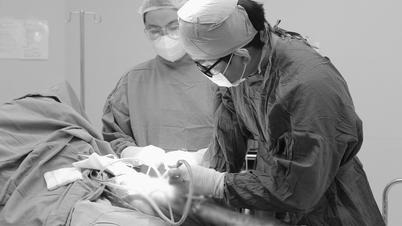

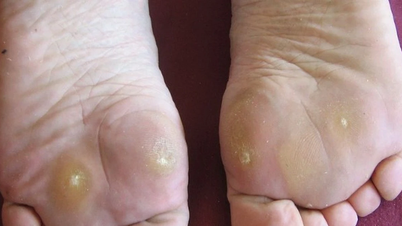


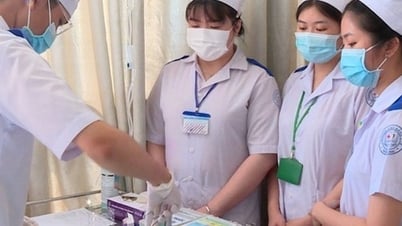

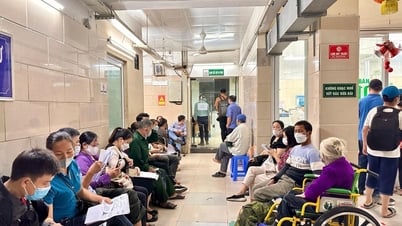

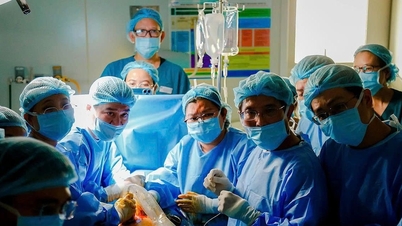

























































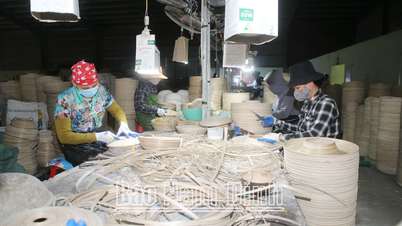





















Comment (0)